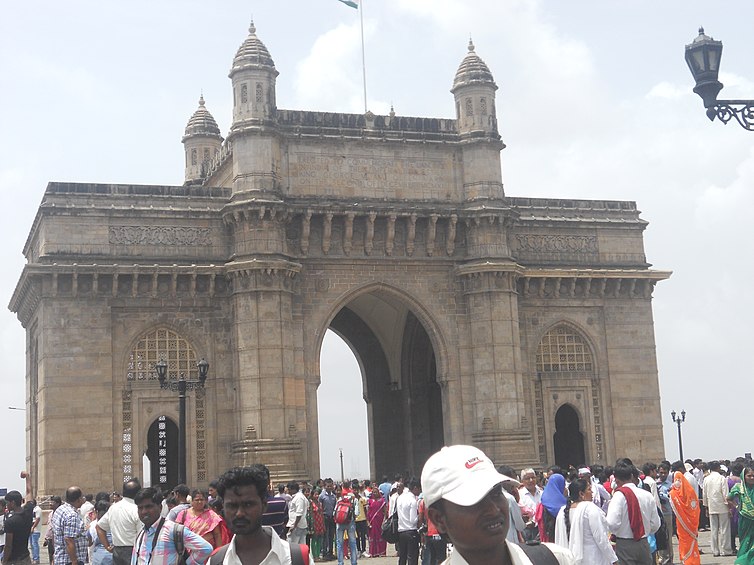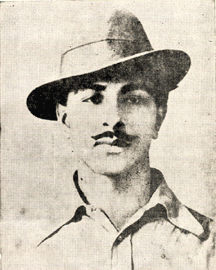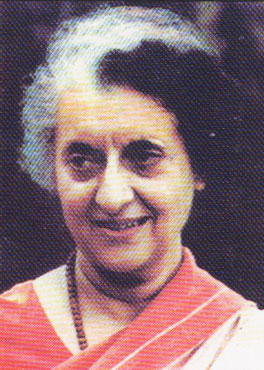
Saturday, August 9, 2008
Some Before Wallpapers


Bhagat Singh

Indra Gandhi


Pandit Jawaharlal Nehru



Babasaheb Ambedkar



Persian and Greek invasions
Much of the northwestern Indian Subcontinent
 (present day Eastern Afghanistan and Pakistan) came under the rule of the Persian Achaemenid Empire in c. 520 BCE during the reign of Darius the Great, and remained so for two centuries thereafter. In 334 BCE, Alexander the Great conquered Asia Minor and the Achaemenid Empire, reaching the north-west frontiers of the Indian subcontinent. There, he defeated King Puru in the Battle of the Hydaspes (near modern-day Jhelum, Pakistan) and conquered much of the Punjab; however, Alexander's troops refused to go beyond the Hyphases (Beas) River near modern day Jalandhar, Punjab. Alexander left many Macedonian veterans in the conquered regions[citation needed]; he himself turned back and marched his army southwest.
(present day Eastern Afghanistan and Pakistan) came under the rule of the Persian Achaemenid Empire in c. 520 BCE during the reign of Darius the Great, and remained so for two centuries thereafter. In 334 BCE, Alexander the Great conquered Asia Minor and the Achaemenid Empire, reaching the north-west frontiers of the Indian subcontinent. There, he defeated King Puru in the Battle of the Hydaspes (near modern-day Jhelum, Pakistan) and conquered much of the Punjab; however, Alexander's troops refused to go beyond the Hyphases (Beas) River near modern day Jalandhar, Punjab. Alexander left many Macedonian veterans in the conquered regions[citation needed]; he himself turned back and marched his army southwest.

The Persian and Greek invasions had important repercussions on Indian civilization. The political systems of the Persians was to influence future forms of governance on the subcontinent, including the administration of the Mauryan dynasty. In addition, the region of Gandhara, or present-day eastern Afghanistan and north-west Pakistan, became a melting pot of Indian, Persian, Central Asian and Greek cultures and gave rise to a hybrid culture, Greco-Buddhism, which lasted until the 5th century AD and influenced the artistic development of Mahayana Buddhism.
The Indian Independence movement

The first step toward Indian independence and western-style democracy was taken with the appointment of Indian councillors to advise the British viceroy, and with the establishment of provincial Councils with Indian members the councillors' participation was subsequently widened in legislative councils. From 1920 leaders such as Mohandas Gandhi began mass movements to campaign against the British Raj. Revolutionary activities against the British rule also took place throughout the Indian sub-continent, these movements succeeded in bringing Independence to the Indian sub-continent in 1947.
Roman trade with India
Roman trade with India started around 1 CE following the reign of Augustus and his conquest of Egypt, theretofore India's biggest trade partner in the West.

The trade started by Eudoxus of Cyzicus in 130 BCE kept increasing, and according to Strabo (II.5.12.), by the time of Augustus up to 120 ships were setting sail every year from Myos Hormos to India. So much gold was used for this trade, and apparently recycled by the Kushans for their own coinage, that Pliny (NH VI.101) complained about the drain of specie to India:
"India, China and the Arabian peninsula take one hundred million sesterces from our empire per annum at a conservative estimate: that is what our luxuries and women cost us. For what percentage of these imports is intended for sacrifices to the gods or the spirits of the dead?"
—Pliny, Historia Naturae 12.41.84.
These trade routes and harbour are described in detail in the 1st century AD Periplus of the Erythraean Sea.
The Magadha Empire

Bronze Age
The Bronze Age on the Indian subcontinent began around 3300 BCE with the beginning of the Indus Valley Civilization. Inhabitants of the ancient Indus river valley, the Harappans, developed new techniques in metallurgy and produced copper, bronze, lead and tin.

The Indus Valley Civilization which flourished from about 2600 BCE to 1900 BCE marked the beginning of the urban civilization on the subcontinent. The ancient civilization included urban centers such as Harappa and Mohenjo-daro (in modern day Pakistan), Dholavira and Lothal (in modern day India). It was centred on the Indus River and its tributaries, and extended into the Ghaggar-Hakra River valley, the Ganges-Yamuna Doab, Gujarat, and northern Afghanistan.
The civilization is noted for its cities built of brick, road-side drainage system and multi-storied houses. Among the settlements were the major urban centres of Harappa and Mohenjo-daro, as well as Dholavira, Ganweriwala, Lothal, Kalibangan and Rakhigarhi. It is thought by some that geological disturbances and climate change, leading to a gradual deforestation may ultimately have contributed to the civilization's downfall. The decline of the Indus Valley Civilization also included a break down of urban society and of the use of distinctively urban traits such as the use of writing and seals